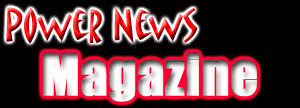
 R6
Speed Trix
R6
Speed Trix |
 R6
Speed Trix R6
Speed Trix |
This edition of Power News is all about the ’99 and ‘00 AMA
Supersport R6’s
Mototune built for Team Yamaha Norway’s Thorvald Saeby.
Both R6's were built and tuned to exactly the same AMA Supersport specifications,
using Nutec
fuel and an Akropovic exhaust system.
|
The
Official 2000 F USA 106 hp. Class |
2000 TEAM |
|
|
Here's a
comparison of the power curves of 3 exhaust pipes on a stock engined R6.
Each pipe was optimized for jetting and dyno tested back to back. |
|
Speed Without Horsepower ??? 1)
Your speed all the way down the straight depends on your turn exit speed.
|
The 114 HP R6 V.S.
The 2000 Mototune R6 |
|
R6 Shopping List |
Spinnin' in the Rain
|
Rain Drive |
|
"Drag Racing"
|
Dry Drive
9-12,500 RPM |
|||
|
When you think about it, the "drag race" in
roadracing really starts out at the turn apex from max lean angle,
maintenance throttle and nearly zero extra traction. ( "Maintenance
throttle" is just the 1/16 th of a turn on the throttle to keep the
front and rear tires evenly weighted.) |
|
||
|
|||
Average Peak Horsepower
Once you’ve fully exited the turn and the bike is 100% hooked up and driving, the
average peak horse power comes into play. The peak
horsepower number can be deceiving… especially on an R6. They have a
unique power curve that actually peaks twice, at around 12,000 and then again
just as it hits the rpm limiter. We found a way to fill in the big valley
between The 114 HP R6's 2 power peaks. It's
a combination of cam timing and friction reduction. It cost us the big peak
number, but the advantage is obvious....The Mototune
R6 keeps on increasing
speed over The 114 HP R6 through 3rd, 4th, 5th,
and 6th gears.
|
Put it All
Together for the 172 Mph Run. |
The Average Peak
Horsepower covers the range from the shift drop up to the rev limiter. |